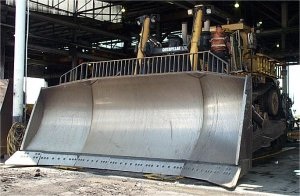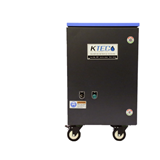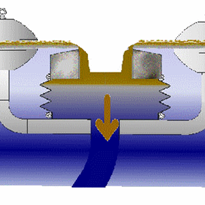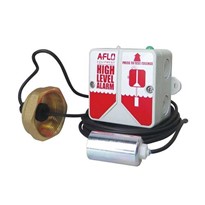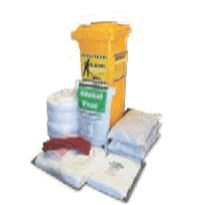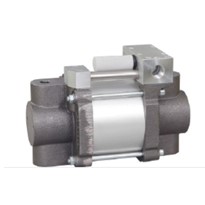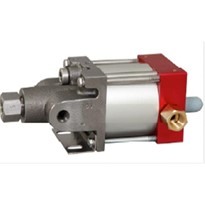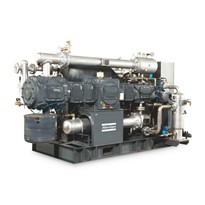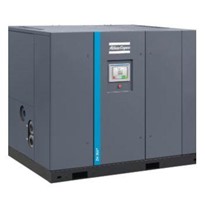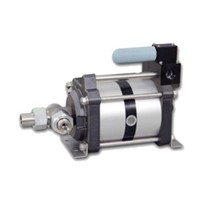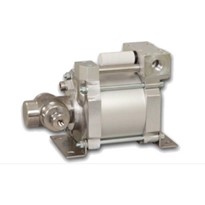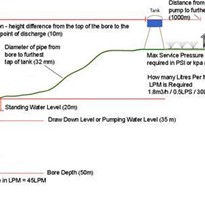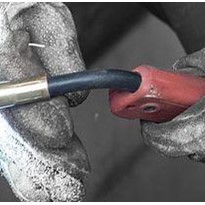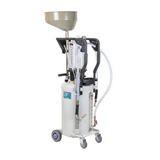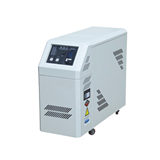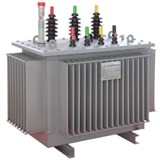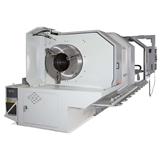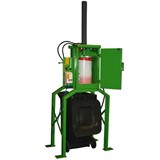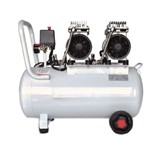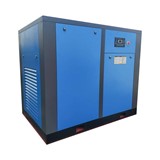They're expensive problems, which can largely be avoided by using FTC Decarboniser and Flushing Oil Concentrate.
Caterpillar, Detroit Series 60s and 2 strokes, Cummins, Mack, Ford, International, Volvo — in fact, any engine type can develop problems depending on the circumstances.
For example, Detroit Series 60 owners will commonly complain to us about high oil soot levels and severe sludge. In most of these cases, crankcase blowby, oil consumption and power loss are also reported, indicating that piston ring fouling has taken place. It is quite common at this stage that mechanics will recommend that the engine be rebuilt.
In our experience, there is a large window of opportunity to restore full serviceability to such engines by physically removing sludge and carbon, using our Flushing Oil Concentrate, and FTC Decarboniser. Many hundreds of our customers have saved themselves the cost of an engine rebuild, plus their downtime losses.
Eventually, of course, severe levels of sludge and carbon will destroy an engine, so early corrective action is essential.
Owners of modern, low emission diesel engines — including Cummins M11s, and some Macks — complain of similar problems. Caterpillar 3500 Series users believe that the introduction of monotherm pistons coincided with increased incidence of severe carbon accumulation on piston top lands and exhaust valves.
Higher oil consumption rates and severely shortened engine life are regularly reported. We have recommended regular use of Flushing Oil Concentrate at each oil service period to restore and maintain piston/ring cleanliness and oil control.
Complaints of high oil soot levels are fairly common and have been raised for most engine manufacturers products, including Caterpillar, Mack, Detroit, Cummins, Toyota, Nissan, Volvo, Scania and more. Soot is a real problem — it can exhaust the oil detergency/dispersancy package, so that engine deposits (sludge and carbon) cannot be controlled.
Importantly, soot is particularly abrasive and increases wear on bearings, journals, crankshafts, camshafts, piston rings and grooves, liners, valve rockers — in fact all lubricated moving components. Many engines are worn out far too early because of excessive oil soot.
Use of FTC Decarboniser in the fuel directly reduces soot production by combustion catalysis. This not only lowers oil soot levels, but also substantially reduces the size of the abrasive soot particles.
Catastrophic engine failures
Many catastrophic failures result from a progression of high oil soot problems. Once the oil's detergency reserves are depleted, sludge builds up. Carbon builds around piston ring grooves. Blowby and oil burning increase, causing further carbon deposits from oil burning to form in combustion spaces, piston top lands (which can lead to a seized piston or hole in the block), exhaust spaces, exhaust valves (dropped valve or burnt valve), and turbochargers (poor performance and failure).
Cost Effective Maintenance have the solutions to rectify engine deposit problems ranging from heavy combustion and exhaust space carbon, injector fouling, to severe crankcase sludging. Bore polish, valve failures, broken rings are common end results of such deposits, and if addressed early enough, our corrective action will avert such damage, while eliminating hard engine carbon and sludge.
High oil soot
Oil soot is a product of combustion inefficiencies. Increasing oil soot levels usually result from the amount of soot progressively overloading the oil's detergency/dispersency package. Soot drops out of the oil as sediment, which is then re-suspended into the clean oil.
This reduces the oil's potential service life, and allows further soot to settle out as sludge, as the oil service life progresses.
With increasing service hours, soot levels increase. Loss of detergency allows further piston ring deposits to form, which in turn, will reduce oil control. Oil burning can add to deposit problems.
Increased oil make up may also mask the actual magnitude of the soot problem, by diluting the soot readings. Exhaust gas recirculation (in low emission engines) puts further soot loadings into the oil.
Corrective action
A threefold action is required to correct and control this problem. Removal of deposits, reduced soot production rate, and reduced rate of migration past the rings into the crankcase is the key to correcting the problem.
Removal of deposits
Any soot/sludge residing in the crankcase needs to be removed, so as to provide full available service life to the oil (instead of depleting its additive package from the start). This is achieved with our Flushing Oil Concentrate (FOC), which is formulated with specific detergents that target hard, baked on carbon, and persistent sludge. It is introduced into clean, hot crankcase oil, and operated at a fast idle for about 30 minutes.
Its action re-suspends sludge and hard carbon (e.g. piston ring deposits), so that full cleanliness is restored to the crankcase. Once these re-suspended contaminants are drained, the new charge of oil has full available service life.
In addition, full available compression control and oil control are restored. In severe cases, this step may have to be incorporated into the maintenance schedule at certain intervals. FOC has a 20 year history of restoring crankcase cleanliness to chronic high soot engines, grossly sludged engines, and freeing up badly stuck piston rings (even engines out of service for 3-5 years).
Reduced migration past the rings
A clean and effective piston ring seal needs to be maintained to ensure minimal migration of combustion bi-products (including soot) into the oil. This can be achieved with the Flushing Oil Concentrate as described above.
Reduction of the production rate of soot
Reduction of the production rate of soot will be assisted by restoring lost compression through piston ring clean up, and restoring fuel system cleanliness/injector spray patterns. FTC Decarboniser is effective in achieving this, as well as further improving fuel mist atomisation upon injection into the combustion chamber. This, in turn, assists in removal of existing deposits in combustion and exhaust spaces.
Deposit removal combined with lower soot production and improved piston ring sealing result in less oil soot loading. Ongoing use of Flushing Oil Concentrate and FTC Decarboniser is required for severe cases, and can lead to restoration of full available service life.
Deposit removal combined with lower soot production and improved piston ring sealing result in less oil soot loading. Ongoing use of Flushing Oil Concentrate and FTC Decarboniser is required for severe cases, and can lead to restoration of full available service life.
For more information, contact Cost Effective Maintenance:
www.costeffective.com.au
sales@costeffective.com.au or Ph (07) 3376 6188


